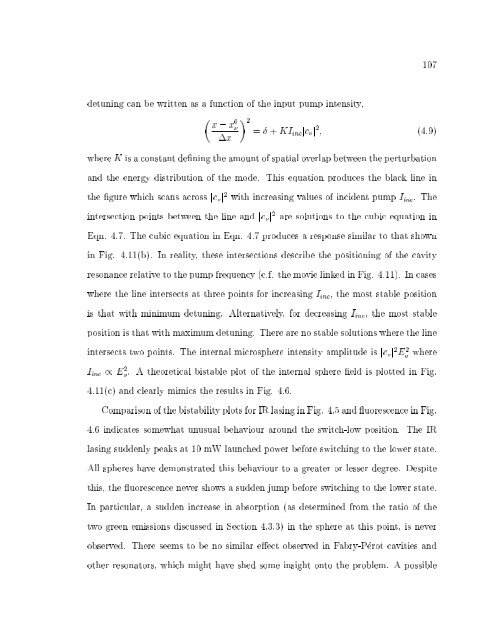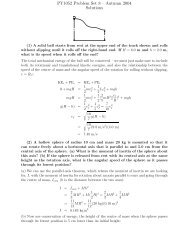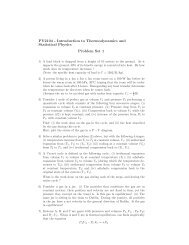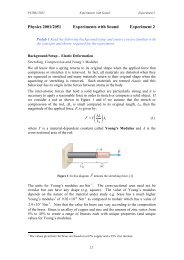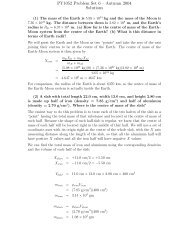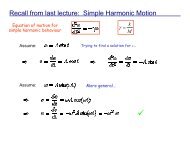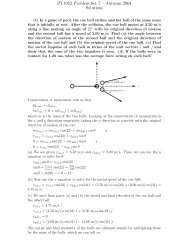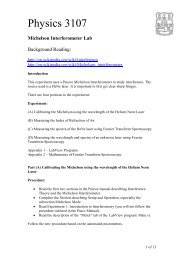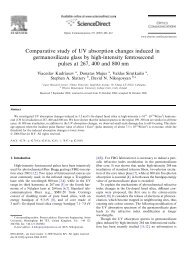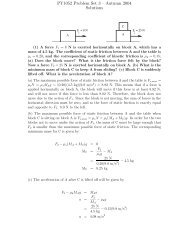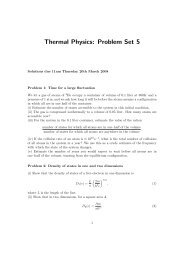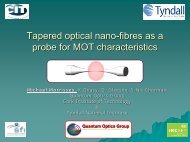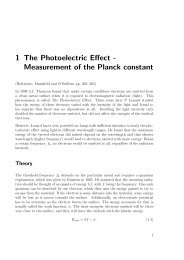optical characterisation of rare-earth doped fluoride and phosphate ...
optical characterisation of rare-earth doped fluoride and phosphate ...
optical characterisation of rare-earth doped fluoride and phosphate ...
- No tags were found...
You also want an ePaper? Increase the reach of your titles
YUMPU automatically turns print PDFs into web optimized ePapers that Google loves.
107detuning can be written as a function <strong>of</strong> the input pump intensity, x x0 2= + KI inc jc j 2 ; (4.9)¡xwhere K is a constant dening the amount <strong>of</strong> spatial overlap between the perturbation<strong>and</strong> the energy distribution <strong>of</strong> the mode. This equation produces the black line inthe gure which scans across jc j 2 with increasing values <strong>of</strong> incident pump I inc . Theintersection points between the line <strong>and</strong> jc j 2 are solutions to the cubic equation inEqn. 4.7. The cubic equation in Eqn. 4.7 produces a response similar to that shownin Fig. 4.11(b). In reality, these intersections describe the positioning <strong>of</strong> the cavityresonance relative to the pump frequency (c.f. the movie linked in Fig. 4.11). In caseswhere the line intersects at three points for increasing I inc , the most stable positionis that with minimum detuning. Alternatively, for decreasing I inc , the most stableposition is that with maximum detuning. There are no stable solutions where the lineintersects two points. The internal microsphere intensity amplitude is jc j 2 E 2 o whereI inc / E 2 o. A theoretical bistable plot <strong>of</strong> the internal sphere eld is plotted in Fig.4.11(c) <strong>and</strong> clearly mimics the results in Fig. 4.6.Comparison <strong>of</strong> the bistability plots for IR lasing in Fig. 4.5 <strong>and</strong> uorescence in Fig.4.6 indicates somewhat unusual behaviour around the switch-low position. The IRlasing suddenly peaks at 10 mW launched power before switching to the lower state.All spheres have demonstrated this behaviour to a greater or lesser degree. Despitethis, the uorescence never shows a sudden jump before switching to the lower state.In particular, a sudden increase in absorption (as determined from the ratio <strong>of</strong> thetwo green emissions discussed in Section 4.3.3) in the sphere at this point, is neverobserved. There seems to be no similar eect observed in Fabry-Perot cavities <strong>and</strong>other resonators, which might have shed some insight onto the problem. A possible


